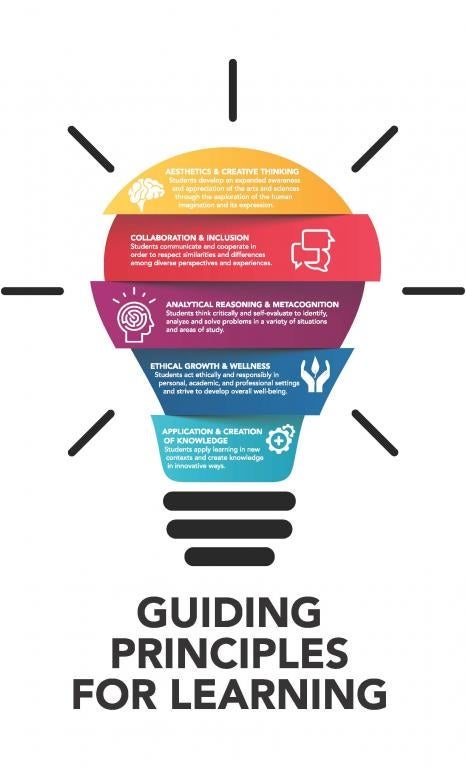The purpose of Guiding Principles for Learning is to create common areas of inquiry & practice that characterize the AWC student experience Students will be able to –
- Make GPL connections from their Pathways Success Course through their Pathways Capstone
- Identify courses that have helped shape their GPL experiences
- Explain how GPLs contributed to their academic & personal growth
I review one or more of the principles with my classes almost daily and review the HLC program requirements (which are closely related to the principles) about once a week.
I gave each of my students the Principles bookmark at the beginning of the semester (and read it to them with my editorial comments). Now at mid-semester the students are getting a second copy of the bookmark and I am going over it again.
One of my goals in using the Principles bookmark statements is to help students understand why I resist their demands that I lecture all the time, but instead ask them to practice the principles listed on the bookmark. None of the Principles say “Sit passively and listen to your teacher talking.”
Guiding Principles for Learning
AESTHETICS & CREATIVE THINKING
Students develop an expanded awareness and appreciation of the arts and sciences through the exploration of the human imagination and its expression.
COLLABORATION & INCLUSION
Students communicate and cooperate in order to respect similarities and differences among diverse perspectives and experiences.
ANALYTICAL REASONING & METACOGNITION
Students think critically and self-evaluate to identify, analyze and solve problems in a variety of situations and areas of study.
ETHICAL GROWTH & WELLNESS
Students act ethically and responsibly in personal, academic, and professional settings and strive to develop overall well-being.
APPLICATION & CREATION OF KNOWLEDGE
Students apply learning in new contexts and create knowledge in innovative ways.

